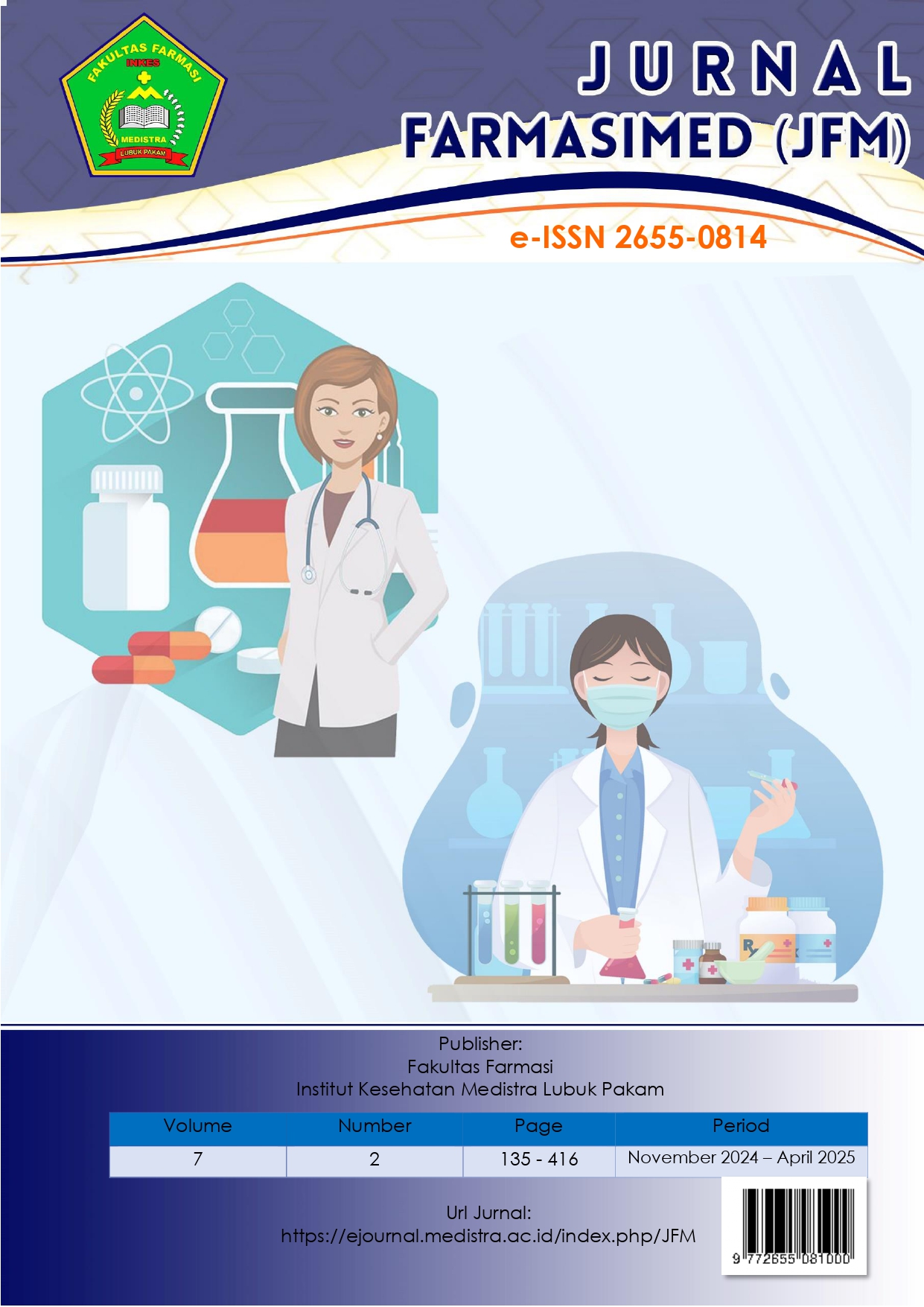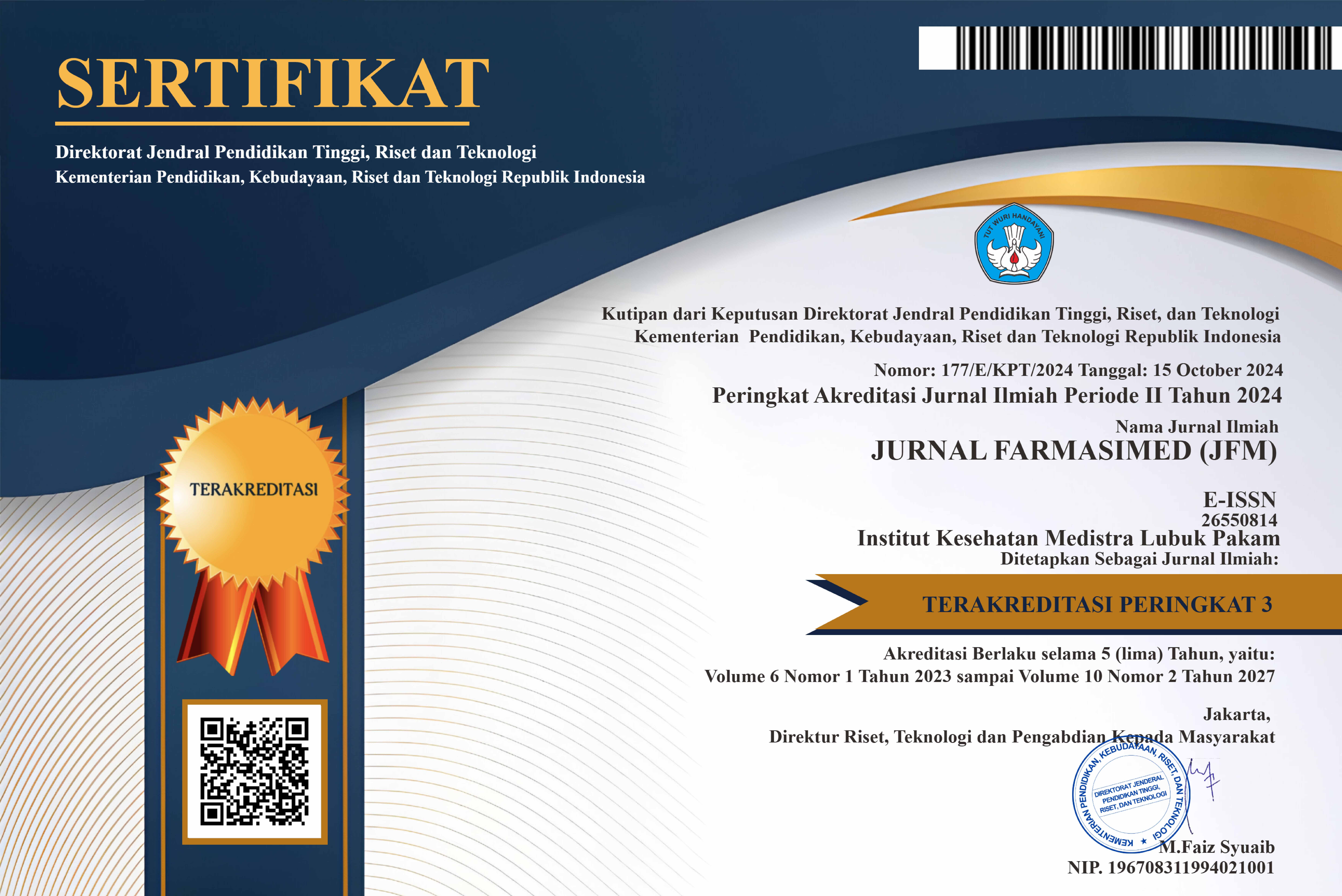Reduction of BOD, COD, and TSS in Textile Wastewater Using Bentonite Activated Charcoal Adsorbent
DOI:
https://doi.org/10.35451/jfm.v7i2.2699Keywords:
Activated carbon, bentonite, textile wastewater, BOD, CODAbstract
Wastewater generated by the textile industry contains a variety of hazardous contaminants, including complex organic compounds, synthetic dyes, surfactants, heavy metals, and critical pollution indicators such as biochemical oxygen demand (BOD), chemical oxygen demand (COD), and total suspended solids (TSS). This study evaluates the efficacy of a dual-adsorbent system comprising hydrochloric acid-activated bentonite and phosphoric acid-activated carbon for the removal of BOD, COD, and TSS from textile effluents. The activation processes significantly altered the physicochemical properties of both adsorbents. The moisture content of activated carbon decreased from 18% to 3.10%, while ash content was reduced from 15% to 3.05%. The iodine number, indicative of adsorption capacity, increased from 650 mg/g to 810 mg/g. Additionally, the fixed carbon content improved from 55% to 80%. Surface characterization via Fourier Transform Infrared Spectroscopy (FTIR) and Scanning Electron Microscopy (SEM) confirmed substantial structural modifications, which enhanced the adsorption performance of the materials. Application of the combined adsorbent system resulted in substantial pollutant removal efficiencies, with reductions of 70.23% in BOD, 70.11% in COD, and 74.88% in TSS. These findings demonstrate that acid-activated bentonite and phosphoric acid-treated activated carbon represent a promising and efficient adsorptive treatment strategy for the remediation of textile wastewater.
Downloads
References
Aritonang B, Ritonga AH, Harefa K, Wiratma DY. Purification of used Cooking Oil using a Combination of Activated Carbon and Bentonite Adsorbents. J Farm 2024;7:31–40. https://doi.org/10.35451/jfm.v7i1.2331.
Aritonang B, Ambarwati NF, Sinaga EM, Ritonga AH. Sintesis dan Karakterisasi Arang Aktif Dari Kulit Salak Sebagai Adsorben Terhadap Kadar BOD, COD dan TSS Pada Limbah Cair Industri Tekstil. J Multidisiplin Madani 2022;2:2611–26. https://doi.org/10.55927/mudima.v2i6.441.
Abdissa D, Beyecha K. Sugarcane bagasse adsorption evaluation and application on BOD and COD removal from textile wastewater treatment. Water Conserv Manag 2021;5:30–4. https://doi.org/10.26480/wcm.01.2021.30.34.
Adjovu GE, Stephen H, James D, Ahmad S. Measurement of total dissolved solids and total suspended solids in water systems: A review of the issues, conventional, and remote sensing techniques. Remote Sens 2023;15:3534. https://doi.org/10.3390/rs15143534.
Ali MM, Hossain D, Khan MS, Begum M, Osman MH. Environmental pollution with heavy metals: A public health concern. Heavy Met. Environ. impacts Mitig., IntechOpen; 2021. https://doi.org/10.5772/intechopen.96805.
Jomova K, Alomar SY, Nepovimova E, Kuca K, Valko M. Heavy metals: toxicity and human health effects. Arch Toxicol 2025;99:153–209. https://doi.org/10.1007/s00204-024-03903-2.
Sonal S, Mishra BK. Role of coagulation/flocculation technology for the treatment of dye wastewater: trend and future aspects. Water Pollut Manag Pract 2021:303–31. https://doi.org/10.1007/978-981-15-8358-2_13.
Verma AK, Dash RR, Bhunia P. A review on chemical coagulation/flocculation technologies for removal of colour from textile wastewaters. J Environ Manage 2012;93:154–68. https://doi.org/10.1016/j.jenvman.2011.09.012.
Rathi BS, Kumar PS. Application of adsorption process for effective removal of emerging contaminants from water and wastewater. Environ Pollut 2021;280:116995. https://doi.org/10.1016/j.envpol.2021.116995.
Bilal M, Ihsanullah I, Shah MUH, Reddy AVB, Aminabhavi TM. Recent advances in the removal of dyes from wastewater using low-cost adsorbents. J Environ Manage 2022;321:115981. https://doi.org/10.1016/j.jenvman.2022.115981.
Sabzehmeidani MM, Mahnaee S, Ghaedi M, Heidari H, Roy VAL. Carbon based materials: a review of adsorbents for inorganic and organic compounds. Mater Adv 2021;2:598–627. https://doi.org/10.1039/D0MA00087F.
Beyan SM, Prabhu SV, Sissay TT, Getahun AA. Sugarcane bagasse based activated carbon preparation and its adsorption efficacy on removal of BOD and COD from textile effluents: RSM based modeling, optimization and kinetic aspects. Bioresour Technol Reports 2021;14:100664. https://doi.org/10.1016/j.biteb.2021.100664.
Hemamathi A, Sukumar B, Aishwarya R, Kruthikameenakshy A, Nivetha V, Pradhiksha J, et al. Treatment of textile waste water using activated carbon method. Mater Today Proc 2023. https://doi.org/10.1016/j.matpr.2023.10.027.
Dhar AK, Himu HA, Bhattacharjee M, Mostufa MG, Parvin F. Insights on applications of bentonite clays for the removal of dyes and heavy metals from wastewater: a review. Environ Sci Pollut Res 2023;30:5440–74. https://doi.org/10.1007/s11356-022-24277-x.
Thakur AK, Kumar R, Chaudhari P, Shankar R. Removal of heavy metals using bentonite clay and inorganic coagulants. Remov Emerg Contam through Microb Process 2021:47–69. https://doi.org/10.1007/978-981-15-5901-3_3.
Mirzapour P, Kamyab Moghadas B, Tamjidi S, Esmaeili H. Activated carbon/bentonite/Fe3O4 nanocomposite for treatment of wastewater containing Reactive Red 198. Sep Sci Technol 2021;56:2693–707. https://doi.org/10.1080/01496395.2020.1843051.
Hussien Hamad MTM. Optimization study of the adsorption of malachite green removal by MgO nano-composite, nano-bentonite and fungal immobilization on active carbon using response surface methodology and kinetic study. Environ Sci Eur 2023;35:26. https://doi.org/10.1186/s12302-023-00728-1.
Obaideen K, Shehata N, Sayed ET, Abdelkareem MA, Mahmoud MS, Olabi AG. The role of wastewater treatment in achieving sustainable development goals (SDGs) and sustainability guideline. Energy Nexus 2022;7:100112. https://doi.org/10.1016/j.nexus.2022.100112.
Ngeno EC, Mbuci KE, Necibi MC, Shikuku VO, Olisah C, Ongulu R, et al. Sustainable re-utilization of waste materials as adsorbents for water and wastewater treatment in Africa: Recent studies, research gaps, and way forward for emerging economies. Environ Adv 2022;9:100282. https://doi.org/10.1016/j.envadv.2022.100282.
Daniel LS, Rahman A, Hamushembe MN, Kapolo P, Uahengo V, Jonnalagadda SB. The production of activated carbon from Acacia erioloba seedpods via phosphoric acid activation method for the removal of methylene blue from water. Bioresour Technol Reports 2023;23:101568.
Neme I, Gonfa G, Masi C. Preparation and characterization of activated carbon from castor seed hull by chemical activation with H3PO4. Results Mater 2022;15:100304.
Tuheteru EJ, Yulianti R, Palit C, Astuti AD, Sari IP, Putri SD, et al. Effect of phosphoric acid composition in the production and characterization of coal activated carbon. IOP Conf. Ser. Earth Environ. Sci., vol. 1422, IOP Publishing; 2024, p. 12028.
Goswami B, Mahanta D. Polyaniline-Fe3O4 and polypyrrole-Fe3O4 magnetic nanocomposites for removal of 2, 4-dichlorophenoxyacetic acid from aqueous medium. J Environ Chem Eng 2020;8:103919. https://doi.org/10.1016/j.jece.2020.103919.
Downloads
Published
Issue
Section
License
Copyright (c) 2025 Barita Aritonang, Ahmad Hafizullah Ritonga, Karnirius Harefa, Herlina H

This work is licensed under a Creative Commons Attribution-NoDerivatives 4.0 International License.
Copyright in each article is the property of the Author.

























